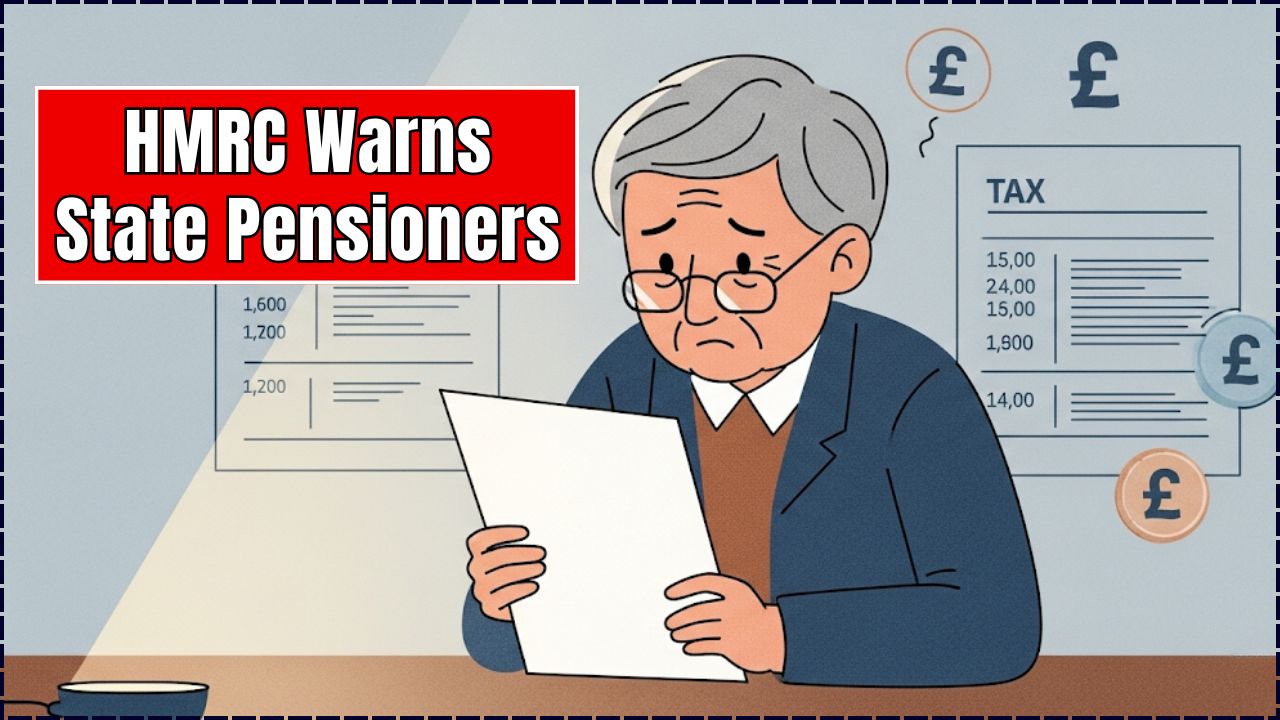The pension gap is making headlines across the UK—and for good reason. According to the Trades Union Congress (TUC), retired women in Britain are getting hit with a shortfall of about £7,600 every year compared to men. That’s the equivalent of going without a pension for four months of the year, and people across the country are furious.

Think about it. £7,600 isn’t spare change—it’s your heating bill, your groceries, maybe even the holiday you’ve been dreaming of. It’s the money that gives dignity and comfort in retirement. And here’s the kicker: this pension gap (36.5%) is more than double the gender pay gap (13.1%).
Pension Gap Sparks National Outrage
| Point | Details |
|---|---|
| Annual Pension Gap | Women miss out on £7,600 per year compared to men |
| Pension Gap Size | Women receive 36.5% less in pension income |
| Symbolic “Pension-Free” Day | 21 August marks when women’s pensions run out compared to men’s |
| Gender Pay Gap | 13.1% (less than half the pension gap) |
| Projected Closing Date | Not expected to close until 2061 |
The £7,600-a-year pension gap isn’t just a financial hiccup—it’s a national crisis. It reflects decades of inequality in work, caregiving, and savings, and it leaves millions of women struggling in retirement.
The good news? Awareness is growing. With smart personal planning and urgent policy reform, we can close this gap faster. Because retirement shouldn’t be about surviving—it should be about living.
Why the Pension Gap Matters
Retirement is supposed to be about freedom and peace of mind, not fear and financial juggling. But the pension gap makes that dream harder for millions of women. It doesn’t just mean less money in the bank—it means fewer choices, less independence, and in some cases, reliance on family or government support.
As one 72-year-old retired nurse told BBC News, “I worked full-time for over 40 years. My male colleagues walked away with pensions that let them travel the world. I barely get by.”
This isn’t just unfair. It’s a systemic injustice baked into how pensions and work have been structured for decades.
A Bit of History: How We Got Here
The UK pension system has gone through major changes over the last century. For decades, pensions were tied to continuous, full-time work—something men were more likely to have. Women often worked part-time, took breaks for childcare, or weren’t enrolled in private pensions at all.
Even as automatic enrollment (2012) expanded access, the minimum thresholds excluded many part-time workers—again, disproportionately women. The result? Generations of women built smaller retirement pots than men, and the gap compounds over time.
What’s Driving the £7,600 Gap?
Let’s break it down:
1. Lower Lifetime Earnings
Women in the UK earn less on average across their careers. Lower pay means smaller contributions and lower pension growth.
2. Career Breaks & Caregiving
Maternity leave, childcare, and caring for elderly relatives create pension “black holes.” Unlike some countries (e.g., Germany) where caregiving years count, the UK still penalizes those gaps.
3. Private Pension Inequality
The average man has a private pension worth £135,000. For women? Around £72,000.
4. Investment Growth
Starting later means less compounding. If a man invests consistently from age 25 but a woman only starts at 35 (due to childcare costs), he could retire with almost double her savings, even if they contribute the same amount annually.
How Does This Affect Real People?
Let’s do some simple math.
- Average retired man: ~£20,800 per year.
- Average retired woman: ~£13,200 per year.
That £7,600 difference could cover:
- Rent for a year in parts of the North.
- Winter heating costs (which average £3,000+ annually for older households).
- Two family holidays or a year’s worth of groceries.
This isn’t just about money—it’s about choices and quality of life.
Global Comparison: UK vs. Other Countries
The UK isn’t alone in this. Across the world, women retire poorer:
- United States: Women’s retirement income is about 30% lower than men’s, thanks to wage gaps and patchy 401(k)/Social Security contributions.
- Germany: Has credits for caregiving years, but women still see a ~26% pension gap.
- Sweden: Closer to equality due to a more generous state pension and caregiving credits.
Compared to these, the UK is one of the worst offenders.
The Ripple Effect on Families & Communities
When women retire with less, it doesn’t just affect them. It hits entire families. Grandparents may struggle to help with childcare costs, adult children may need to step in financially, and communities lose out on spending power.
In the U.S., studies show women with lower retirement savings are twice as likely to live below the poverty line after 65. The UK risks heading the same way if nothing changes.
Practical Steps to Protect Your Future
Here’s a roadmap anyone can follow:
Step 1: Check Your State Pension Forecast
Visit gov.uk/check-state-pension to see what you’ll receive and if you can fill gaps with voluntary National Insurance contributions.
Step 2: Maximize Employer Contributions
Always contribute enough to get the full employer match. That’s free money.
Step 3: Consolidate Your Pots
Old jobs? Old pensions. Bring them together so fees don’t eat away at your savings.
Step 4: Invest Early & Smart
Even £50/month at 5% interest becomes £41,000 over 30 years. That’s compounding magic.
Step 5: Tailored Tips by Age
- 20s: Start early, even if it’s small.
- 40s: Check your pots, top up gaps, increase contributions if possible.
- 60s+: Maximize NI contributions, delay retirement slightly if feasible.
The Old State Pension vs. The New State Pension
| Feature | The Old State Pension (Pre-2016) | The New State Pension (Post-2016) |
| Eligibility | Required 30 years of National Insurance (NI) contributions. | Requires 35 years of NI contributions for the full amount. |
| Max Weekly Rate | £176.45 | £221.20 (for 2024/25) |
| Key Difference | Comprised a ‘basic’ and ‘additional’ pension, often complicated by ‘contracting out’. | Simplified into a single, flat-rate pension. |
| Impact on Gaps | People who were ‘contracted out’ or had career breaks often had significant shortfalls in their Additional State Pension. | Aims to provide a simpler, more transparent foundation for retirement, but gaps in NI contributions still reduce the amount. |
What Experts & Policy Makers Say
- TUC: Urges immediate reform, including auto-enrollment for part-time workers and credits for caregiving years.
- Economists: Warn that without reform, the gap could drain public welfare budgets.
- Advisers: Stress financial literacy—more women need to treat pensions as a must-pay bill, not an afterthought.
Top 3 Pension Mistakes to Avoid
- Myth #1: The State Pension will be enough. While the State Pension provides a vital safety net, it’s typically not enough to fund a comfortable retirement. Experts suggest you’ll need additional savings to cover your desired lifestyle.
- Mistake #2: Not taking advantage of your employer’s contributions. If your employer offers a pension scheme, they will contribute money on your behalf. This is essentially free money! Make sure you’re contributing at least enough to get the maximum employer match.
- Mistake #3: Forgetting about old pension pots. With the average person changing jobs multiple times, it’s easy to lose track of old workplace pensions. Find them and consider consolidating them to make managing your retirement savings easier.
What Needs to Change: A Policy Wishlist
- Auto-Enroll All Workers – scrap minimum thresholds.
- Care Credits – count caregiving years toward pensions.
- Employer Incentives – encourage companies to top up pensions during maternity/parental leave.
- Financial Education – ensure schools teach pension basics, especially for young women.
FAQs
Q1: Why is the pension gap bigger than the pay gap?
Because pensions reflect a whole lifetime of earnings, breaks, and compounding—not just pay.
Q2: What can younger women do now?
Start saving, check employer schemes, and don’t cash out old pensions.
Q3: Will the gap ever close?
Yes, but at the current rate, not until 2061. Faster reform could shorten that.
Q4: Is this just a UK issue?
No—similar pension gaps exist worldwide, though some countries (like Sweden) do better.
Q5: What about men in low-income jobs?
They can struggle too, but statistically, women face much larger gaps.












